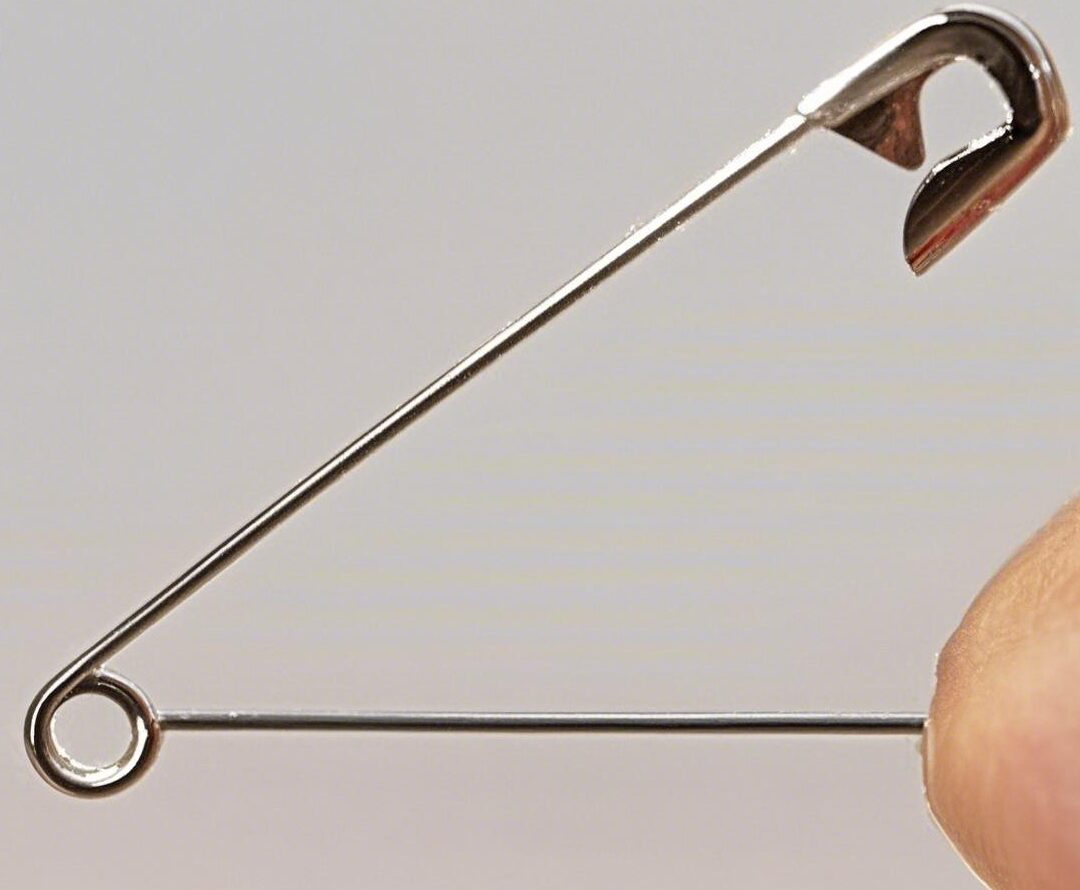Introduction
Why Tiny Details Matter
Ever stopped to wonder why some everyday objects are designed the way they are? That little ridge on your soda can tab, the grooves on your toothbrush, or — in this case — the tiny hole near the coil of a safety pin? It might seem insignificant, but every curve, edge, and yes, even that hole, has a story.
The Commonly Overlooked Design
Safety pins are such a staple of daily life that we rarely stop to examine them. But that tiny hole nestled near the spring coil? It’s not just there for looks. Let’s peel back the layers of this humble household tool.
Anatomy of a Safety Pin
Basic Components
At a glance, a safety pin looks simple: a sharp pin, a coiled spring, and a clasp to keep the pointy bit in check. But every part has a job.
-
Pointed pin: Pierces fabric or other materials.
-
Clasp: Secures the pin and prevents injury.
-
Coil: Provides spring tension.
-
Tiny hole: The unsung hero — and our main focus today.
Materials Used in Safety Pins
Most safety pins are made from steel or brass for strength and rust resistance. Some have coatings for aesthetic or anti-allergic purposes.
Evolution of the Safety Pin Design
Since its invention in 1849, the safety pin has seen minimal changes — a testament to a design that just works. But small tweaks, like that little hole, make a big difference.
The Mystery of the Tiny Hole
Location and Visibility
This hole is usually found near the coil of the safety pin. It’s small, often overlooked, and sometimes even partially hidden depending on the design.
First Assumptions – Just a Manufacturing Quirk?
Many assume it’s leftover from manufacturing or simply an alignment guide. But nope — it’s far more intentional than that.
Real Purpose of the Tiny Hole
Spring Mechanism Function
The hole plays a key role in the spring mechanism. It’s part of the way tension is managed and released as you open and close the pin.
Tension and Flexibility Balance
Think of it like the joint in your elbow — the hole helps maintain the right balance of strength and flexibility. It allows the wire to flex and bend without breaking under pressure.
Enhancing Durability and Strength
By reducing stress concentration at one point, the hole helps prevent metal fatigue. Without it, your pin might warp, snap, or wear out much quicker.
Engineering Behind the Safety Pin
Mechanical Advantage
That tiny hole is actually a key design element in the overall function. It helps manage mechanical leverage when you open and close the pin.
Stress Distribution Explained
It distributes stress more evenly across the pin, which makes it safer and longer-lasting. That’s engineering magic in miniature!
Safety Considerations in Design
The hole ensures that the clasp doesn’t slip and the pin doesn’t accidentally open — crucial for items worn on the body or used on babies.
Historical Insight
Walter Hunt and the Invention
Walter Hunt patented the modern safety pin in 1849 — and sold the rights for just $400. While his original design didn’t include the hole, modern iterations have evolved.
Changes in Design Over Time
As production methods improved, manufacturers added features like the hole to improve reliability and make mass production easier.
Everyday Applications
Fashion and Emergency Fixes
From torn hems to busted buttons, safety pins are the unsung heroes of wardrobe malfunctions. That tiny hole ensures they don’t fail you mid-wear.
Medical and Baby Use
Used in cloth diapers and bandages, safety pins have to be secure and strong — the hole makes sure they do their job without injury.
DIY Hacks and Creative Uses
Crafting, hanging photos, even replacing broken zipper pulls — safety pins do it all. And that little hole helps them stay functional through it all.
Why the Hole Matters to Manufacturers
Cost-Effective Manufacturing
The hole also allows machines to bend, twist, and coil the wire precisely. That means faster, cheaper, and more consistent production.
Quality Control and Inspection
During quality checks, the hole serves as a reference point to inspect alignment and spring functionality. Clever, right?
Common Misconceptions
“It’s Just Decorative”
Nope — it serves a real purpose. It’s not a design flourish, even if it does make the pin look kinda cool.
“It’s for Hanging Pins on Hooks”
While you can hang pins through that hole, that’s not why it’s there. That’s like saying the windshield wipers are meant to hold parking tickets!
Fun Facts About Safety Pins
Used in Protests and Punk Culture
In punk fashion, safety pins are iconic. From ears to eyebrows to leather jackets — they symbolize rebellion and resistance.
Symbolism Around the World
In some cultures, safety pins are worn to ward off the evil eye. In others, they’re gifted for good luck. That little hole travels far and wide!
Conclusion
Small Feature, Big Purpose
That tiny hole in a safety pin might not catch your eye, but it’s essential to how the pin works. It enhances strength, enables spring action, improves safety, and even aids in manufacturing. Sometimes, the smallest details carry the most weight — and in the case of safety pins, that tiny hole is a giant leap in smart design.
FAQs
1. Why is there a coil in a safety pin?
The coil acts like a spring, creating tension that keeps the pin closed securely and allows it to snap back into place.
2. Can the tiny hole affect how a safety pin works?
Yes! The hole helps manage tension and prevents metal fatigue, making the pin more durable and functional.
3. Are all safety pins designed with this hole?
Not all, but most modern safety pins include it because of its engineering benefits and efficiency in manufacturing.
4. Who invented the safety pin?
Walter Hunt patented the first safety pin in 1849, although designs have evolved since.
5. What makes a safety pin “safe”?
The clasp covers the pointed end to prevent injury, and design elements like the coil and tiny hole ensure it stays securely closed.

